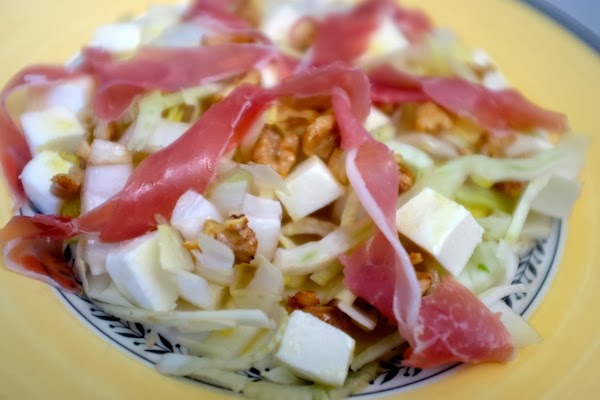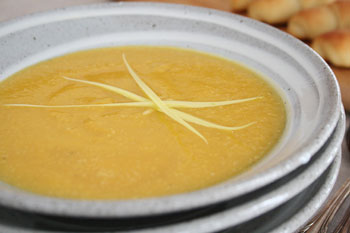 Yes, the title is a mouthful, but let me just say, every component plays an integral part in this AMAZING soup.
Yes, the title is a mouthful, but let me just say, every component plays an integral part in this AMAZING soup.
And straight from the mouth of my cauliflower-hating husband..."Hunna (he calls me hunna) when you have guests over, THIS soup has to be on the menu. It has to be "the soup", as in our house soup. One that never-ever goes away." Yep, that's how good it is. This comes from the man that hates cauliflower. He won't let me steam it in the house because it smells so bad. Roasting on the other hand doesn't release those stinky smells and makes the cauliflower taste wonderful.
There is something about this soup that gives it the perfect mouthfeel. The buffalo sauce just adds some awesome highlights and spice.
I highly suggest making a big pot for Super Bowl, it will disappear. And if you happen to serve it with my Easy Artisan Bacon-Cheese Bread, you might hear angels sing. I'm just sayin...

 Growing up I ate a green salad pretty much every night with dinner. In Italy, we did the same, though it was served at the end of the meal. These days, I find it hard to convince my other half to eat salad. My solution is to make main dish salads. This one uses Belgian endive and is easy to make for one or a group. It has many delicious things added to a base of endive and fennel, namely candied walnuts, fresh mozzarella and prosciutto.
Growing up I ate a green salad pretty much every night with dinner. In Italy, we did the same, though it was served at the end of the meal. These days, I find it hard to convince my other half to eat salad. My solution is to make main dish salads. This one uses Belgian endive and is easy to make for one or a group. It has many delicious things added to a base of endive and fennel, namely candied walnuts, fresh mozzarella and prosciutto. I love hearty spicy chili, especially during the winter months. This one is quick to make with just basic ingredients and guaranteed to warm you up on a cold day.
I love hearty spicy chili, especially during the winter months. This one is quick to make with just basic ingredients and guaranteed to warm you up on a cold day.
 As the New Year begins, it only seems right to offer a recipe for a soup that is chock full of vegetables and even a little bit of fruit. The creamy soup will incorporate nicely into a regime of healthful menus.
As the New Year begins, it only seems right to offer a recipe for a soup that is chock full of vegetables and even a little bit of fruit. The creamy soup will incorporate nicely into a regime of healthful menus.
